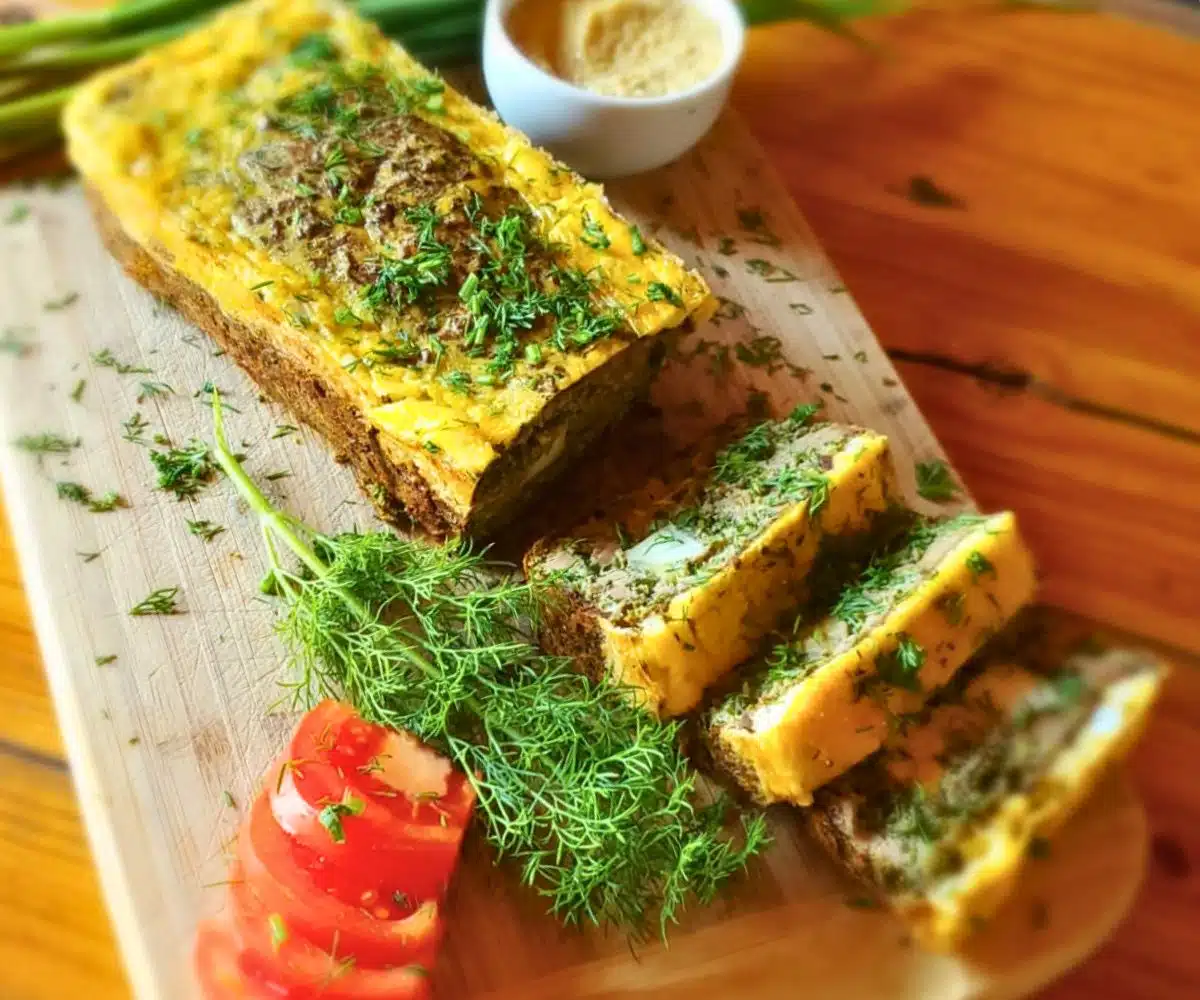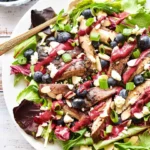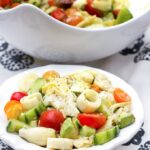Romanian cuisine is a delightful mix of flavors and traditions, reflecting the country’s rich history and diverse culture. You will find a variety of dishes that are not only delicious but also steeped in tradition, bringing a taste of Romania’s vibrant culinary heritage to your kitchen.
Exploring these recipes offers a wonderful opportunity to experience the unique ingredients and cooking methods that make Romanian food so special. From hearty stews to refreshing salads, each dish tells its own story and promises to bring something new to your table.
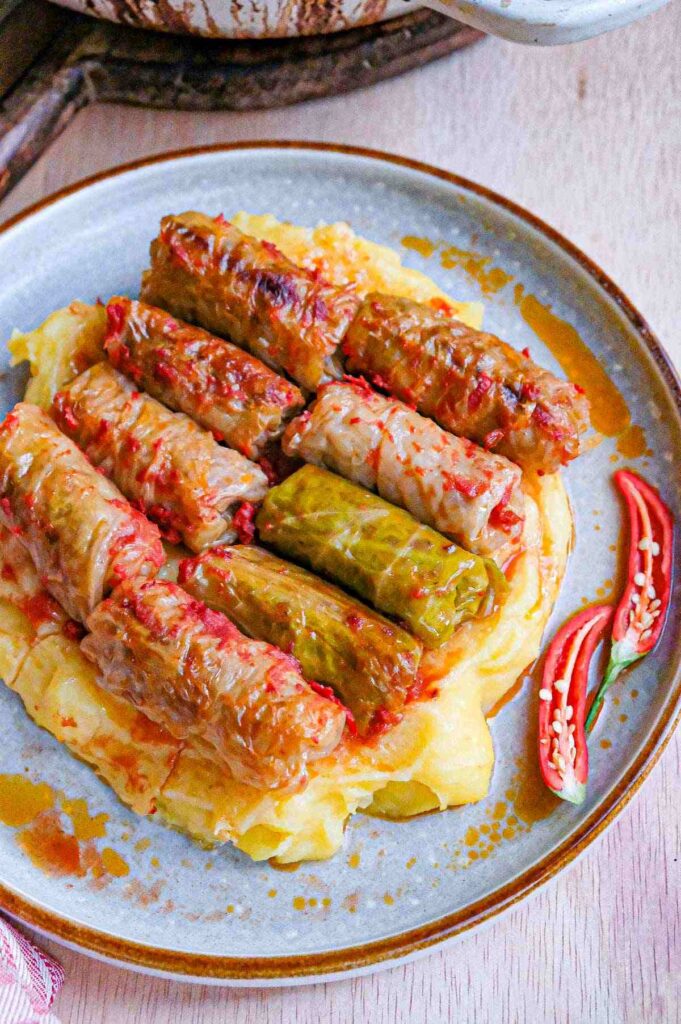
1) Sarmale (Cabbage Rolls)
Sarmale, also known as cabbage rolls, is a beloved Romanian dish. This comforting meal usually consists of ground pork, rice, and herbs like parsley and dill. You’ll find these ingredients wrapped in sour cabbage leaves.
Start by softening onions in a skillet and then add the rice. Combine this mixture with the ground pork, salt, pepper, and herbs in a large bowl. Be cautious with the salt since the cabbage leaves are already salty.
Prepare the pickled cabbage by separating the leaves carefully. You’ll want to cut each leaf into sheets, which will hold the filling. Place the larger leaves aside to use for wrapping.
When cooking sarmale, add oil to a pan and layer some chopped cabbage and onions at the bottom. Carefully arrange the rolls in circular layers. Scatter bay leaves, peppercorns, and smoked bacon between the layers for extra flavor.
Pour a mix of sour cabbage juice and water to cover the rolls. Let them boil on low heat for at least two hours, covered. After that, add tomato juice and continue cooking for another hour or two. The long cooking time allows the flavors to meld beautifully.

2) Mămăligă (Polenta)
Mămăligă, a staple in Romanian cuisine, is like Italian polenta. Made from cornmeal, it is simple and comforting.
To cook Mămăligă, start by boiling water with salt in a pot. Add the cornmeal gradually, whisking to avoid lumps. Stir constantly until it thickens. This takes about 20-30 minutes.
Mămăligă can be served as a side dish with meats or vegetables. You can also enjoy it with cheese, often feta, and sometimes with eggs and butter.
To make a baked version, spread Mămăligă in a greased dish. Add layers of cheese, eggs, or bacon. Bake until set and golden.
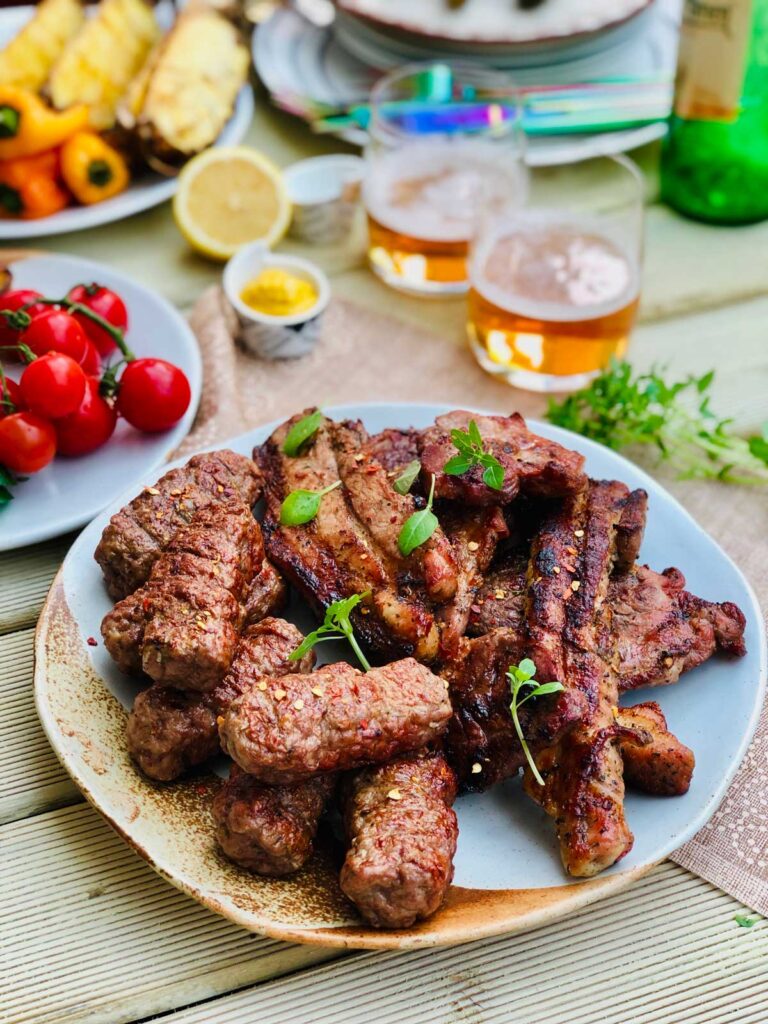
3) Mici (Grilled Sausages)
Mici, also known as Mititei, are a popular Romanian street food. These grilled sausages are made from a mix of ground beef and pork, seasoned with garlic, thyme, paprika, salt, and pepper.
To prepare Mici, mix the meats and seasonings thoroughly in a large bowl. Gradually add broth while mixing to create a smooth, slightly sticky paste. Some recipes suggest using a stand mixer with a dough hook to blend everything evenly.
Once your mixture is ready, cover and refrigerate it for a few hours or overnight. This helps the flavors meld together. When ready to cook, shape the meat into small sausages, about 2-3 inches long and 1 inch thick.
Grill the sausages on a hot grill or in a hot pan for about 4 minutes on each side. Mici are best served fresh off the grill with mustard and a cold glass of beer. Enjoy this Romanian delicacy with friends and family for an authentic cultural experience.
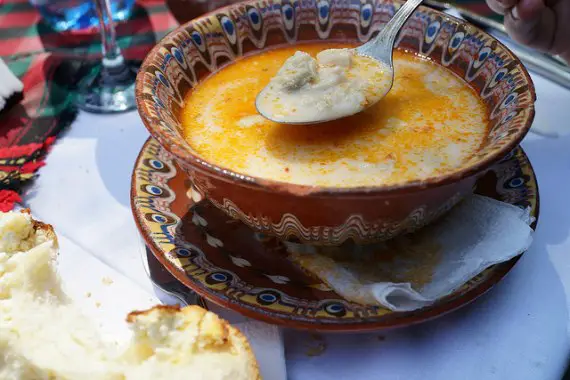
4) Ciorbă de burtă (Tripe Soup)
Ciorbă de burtă, or tripe soup, is a beloved Romanian dish enjoyed especially in colder months. This hearty soup is known for its rich flavors and warming qualities.
To start, you need fresh or pre-boiled beef tripe. Wash the tripe thoroughly until it’s clean and odor-free.
In a large pot, add water, beef bones, carrots, celery, onion, parsnip, and bay leaves. Bring it to a boil. Once boiling, reduce the heat and let it simmer for 2 to 3 hours until the tripe is tender.
After cooking, remove the bones and vegetables, leaving only the tripe in the pot. Mix egg yolks and sour cream separately. Slowly add some hot soup to this mix to temper it, then combine back into the pot.
Season with salt, pepper, and a bit of vinegar for a tangy kick. Some also add marinated bell peppers cut into small cubes for extra flavor.
Serve the soup hot, often with a side of sour cream and fresh bread. It’s a dish that brings comfort and a taste of Romanian tradition to your table.
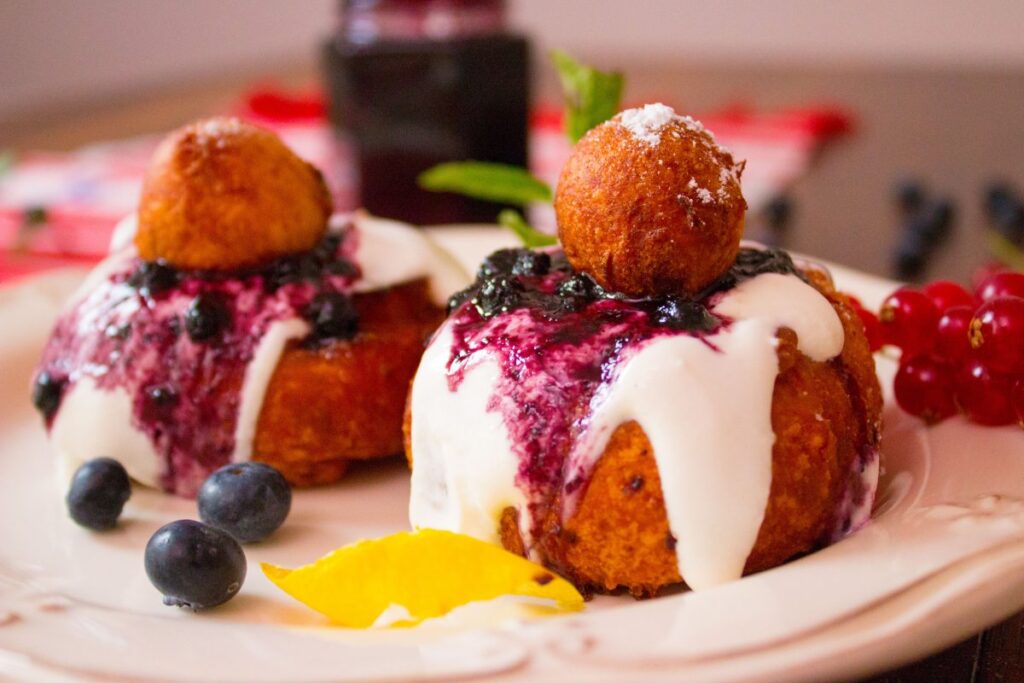
5) Papanasi (Cheese Doughnuts)
Papanasi are delicious Romanian cheese doughnuts made from a mix of cheese, eggs, flour, and sugar. They are fried to golden perfection and usually served with sour cream and jam.
To make Papanasi, start by preparing the cheese. If you’re using store-bought ricotta or farmer’s cheese, you need to remove excess moisture by squeezing the cheese in a clean tea towel until it’s dry and crumbly.
Next, mix the cheese with egg yolks, sugar, lemon zest, and vanilla extract. In a separate bowl, combine flour with baking soda or baking powder. Gradually add the flour mixture to the cheese mixture. The dough should be soft, sticky, yet manageable.
Let the dough rest for about 15-20 minutes. This makes it easier to work with. Divide the dough into small balls and shape them into doughnuts. Flour your hands and the work surface generously to prevent sticking.
Heat oil in a deep pan and fry the doughnuts until they’re golden brown on all sides. Remove them with a slotted spoon and let them drain on paper towels.
Serve Papanasi warm, topped with sour cream and fruit jam. The combination of the crispy exterior and the creamy inside, along with the tangy toppings, makes these doughnuts irresistible.
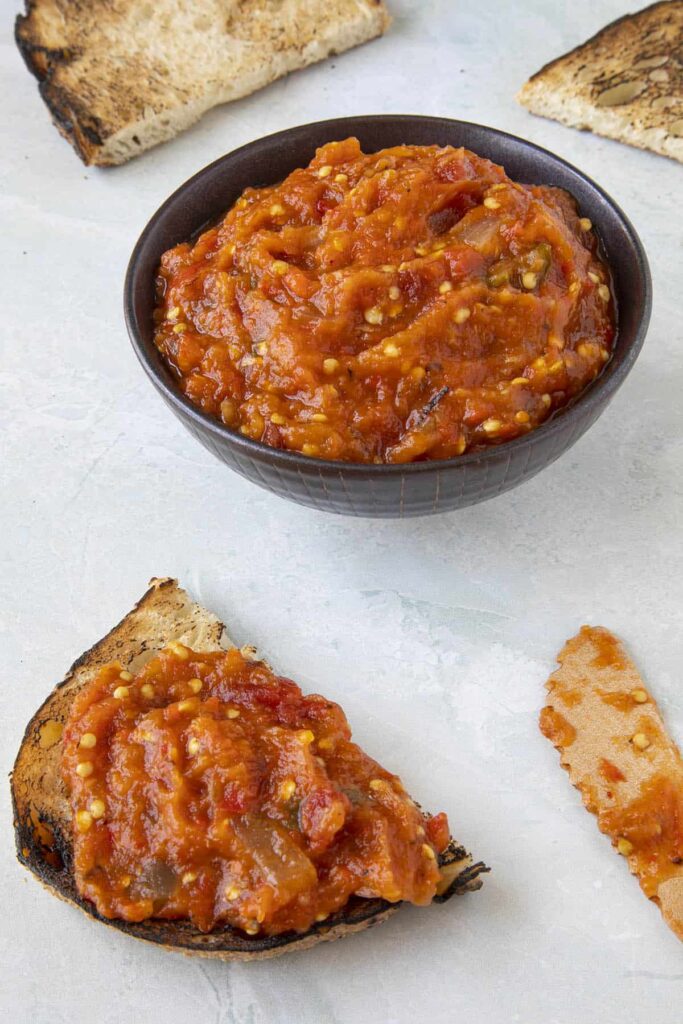
6) Zacuscă (Vegetable Spread)
Zacuscă is a traditional Romanian vegetable spread that captures the flavors of roasted eggplants, bell peppers, onions, and tomatoes.
To make Zacuscă, you first need to roast eggplants and red bell peppers until their skins char and bubble up. This usually takes about 20 minutes at 400°F. Let them cool, then peel off the skins.
Next, sauté chopped onions in vegetable oil until they become translucent. Add the roasted and peeled vegetables, along with pureed tomatoes, salt, pepper, bay leaves, and a bit of sugar. Mix well to combine all the ingredients.
Simmer the mixture on low heat for about 90 minutes, stirring occasionally to prevent sticking. The flavors meld together, creating a rich and savory spread.
You can enjoy Zacuscă on freshly baked bread or as a side dish. It’s a popular choice for breakfast or as an appetizer during family gatherings. Serve it warm or chilled, and savor the essence of Romanian cuisine.
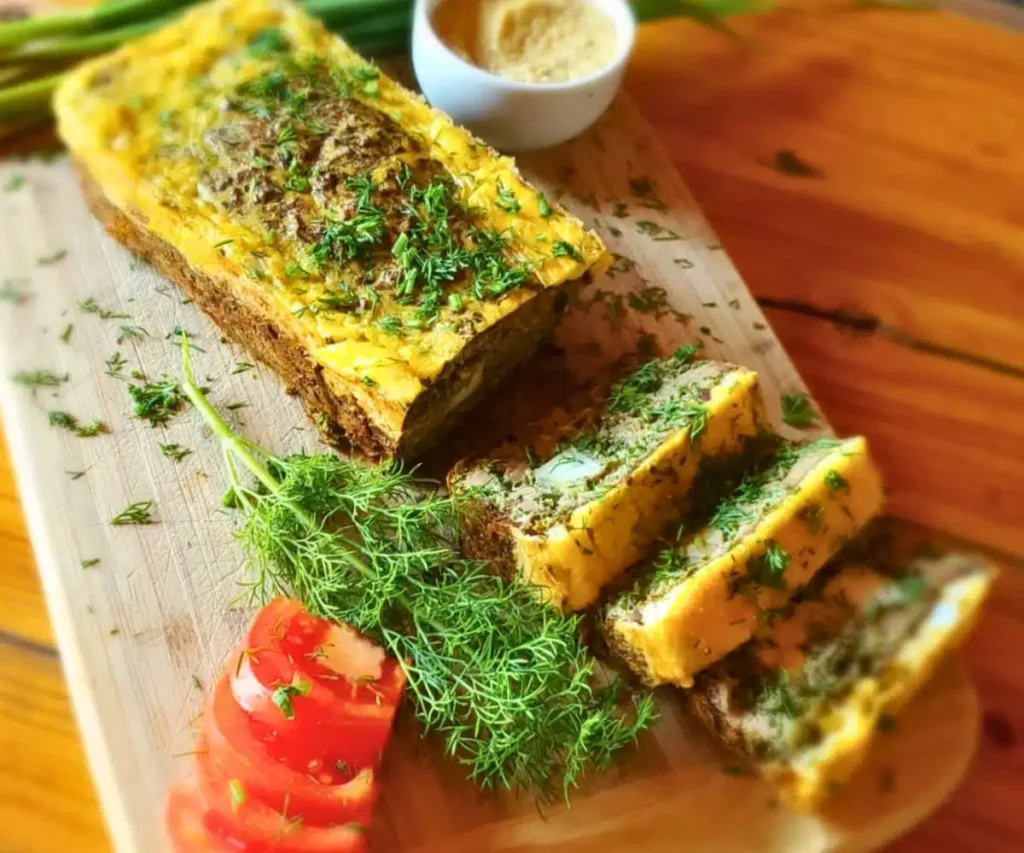
7) Drob de miel (Lamb Haggis)
Drob de miel is a traditional Romanian dish often prepared during Easter. It’s made using lamb’s organs, such as liver, heart, and lungs. These ingredients give the dish a distinct, rich flavor.
Start by boiling the lamb organs with a pinch of salt until they are cooked. Drain and let them cool. When the organs are cool, cut them into cubes.
In a large bowl, mix the cubed organs with chopped onions, garlic, and greens like dill and parsley. Add beaten eggs to bind the mixture together. Season well with salt and pepper.
Prepare a loaf pan by lining it with baking paper or coating it with olive oil and flour. Pour in half of the organ mixture, then place hard-boiled eggs in the middle. Cover with the remaining mixture.
Press the mix well to ensure it holds together. Top with thin slices of butter. Bake in a preheated oven at 180 degrees Celsius for about 40 minutes until the drob is set and the top is golden brown.
Drob de miel has a savory and aromatic profile. It is an essential dish for Romanian Easter meals, offering a unique taste of tradition.
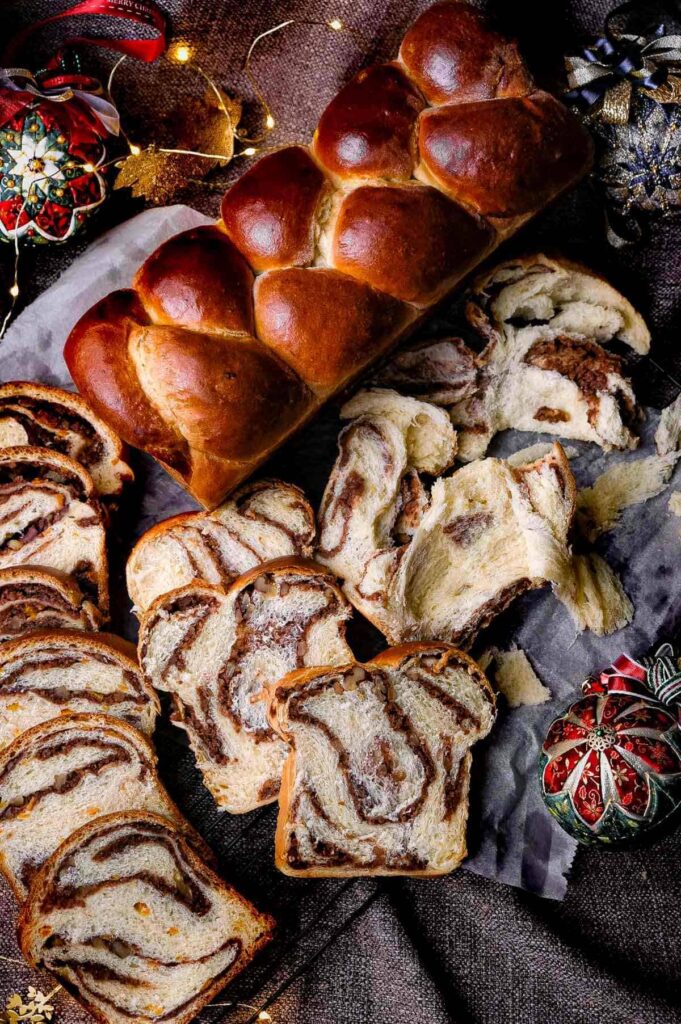
8) Cozonac (Sweet Bread)
Cozonac is a beloved Romanian dessert, especially during holidays. It’s a sweet, braided bread often filled with cocoa, nuts, or Turkish delight.
To make Cozonac, you start by mixing flour, sugar, yeast, and milk. After these ingredients are well combined, slowly add butter until the dough is smooth and elastic. Let it rise in a warm place.
Once the dough has doubled in size, divide and roll it into two long pieces. Spread your chosen filling evenly over each piece. You can use a mixture of cocoa powder, sugar, and ground walnuts.
Next, carefully braid the two pieces together to form one loaf. Place the braided loaf into a rectangular baking tin. Cover it with a damp towel and let it rise again until doubled.
Before baking, preheat your oven to 350°F (180°C). Brush the top of the loaf with a beaten egg and sprinkle with raw sugar. This gives the bread a shiny, golden crust once baked.
Bake the loaf in the oven for about 35-45 minutes. It’s done when the top is golden brown and a toothpick inserted into the center comes out clean. Allow it to cool before slicing.
Enjoy your Cozonac with a cup of tea or coffee. It’s a perfect treat for any festive occasion.
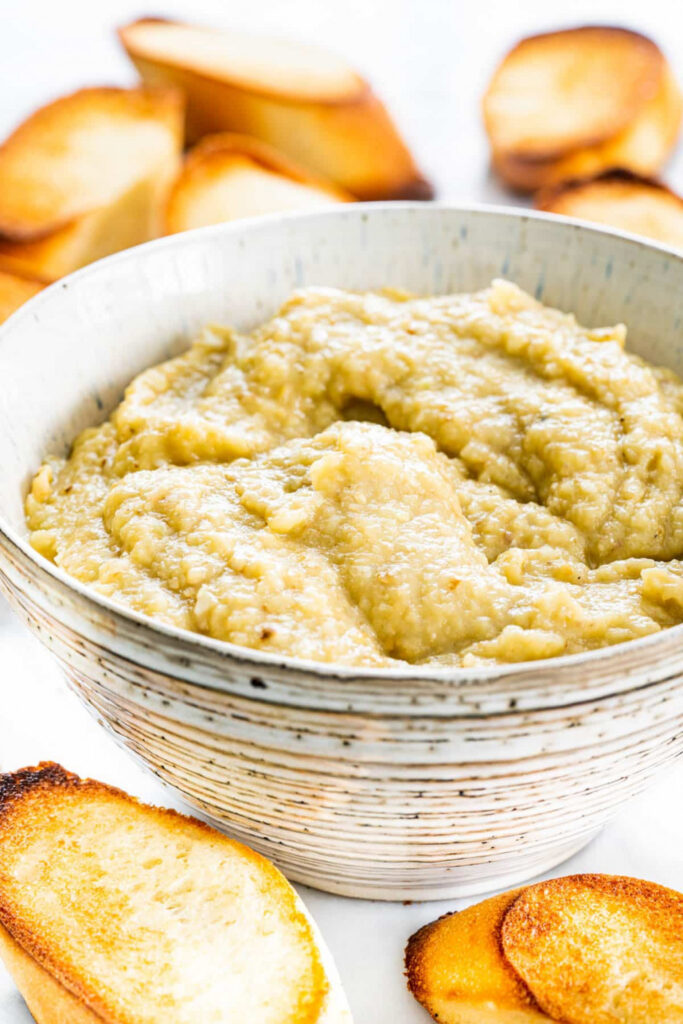
9) Salată de vinete (Eggplant Salad)
Salată de vinete, or eggplant salad, is a tasty Romanian dish. You will often find it served as an appetizer or spread. Making this dish starts with grilling, roasting, or baking the eggplants.
First, let the eggplants cool. Then, remove the skin carefully. Place them in a strainer to drain the bitter juices for about 30 minutes to an hour.
Next, transfer the eggplants to a bowl or food processor. Add finely chopped onion, salt, and oil. Blend or mix lightly until smooth. If you prefer, you can also make variations by adding mayonnaise or yogurt.
This dish is often enjoyed with fresh bread. Its smoky, smooth flavor makes it a favorite in Romanian cuisine.
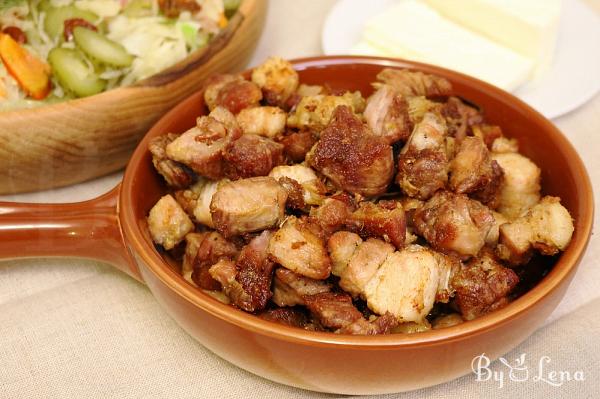
10) Tochitură (Hearty Stew)
Tochitură is a traditional Romanian stew that is both comforting and rich in flavor. This dish features a mix of various meats such as pork, beef, or poultry. It often includes sausages, bacon, and sometimes even offal.
The stew is typically flavored with onions, garlic, and a splash of white wine. You will also find tomato paste added to create a thick and tangy sauce. Bay leaves and dried thyme often enhance the dish, adding depth to the rich flavors.
To prepare Tochitură, you start by cooking the meat until it is tender, usually over low heat for about an hour. The white wine helps to deglaze the pan and cook down into a delicious base for the stew.
In some regions, Tochitură can include different spices and ingredients. Generally, however, the rich flavor profile remains consistent. The dish is typically served with a side of creamy polenta and a fried egg for a complete and hearty meal.
When you taste Tochitură, you experience the essence of Romanian comfort food, making it a memorable and satisfying dish.
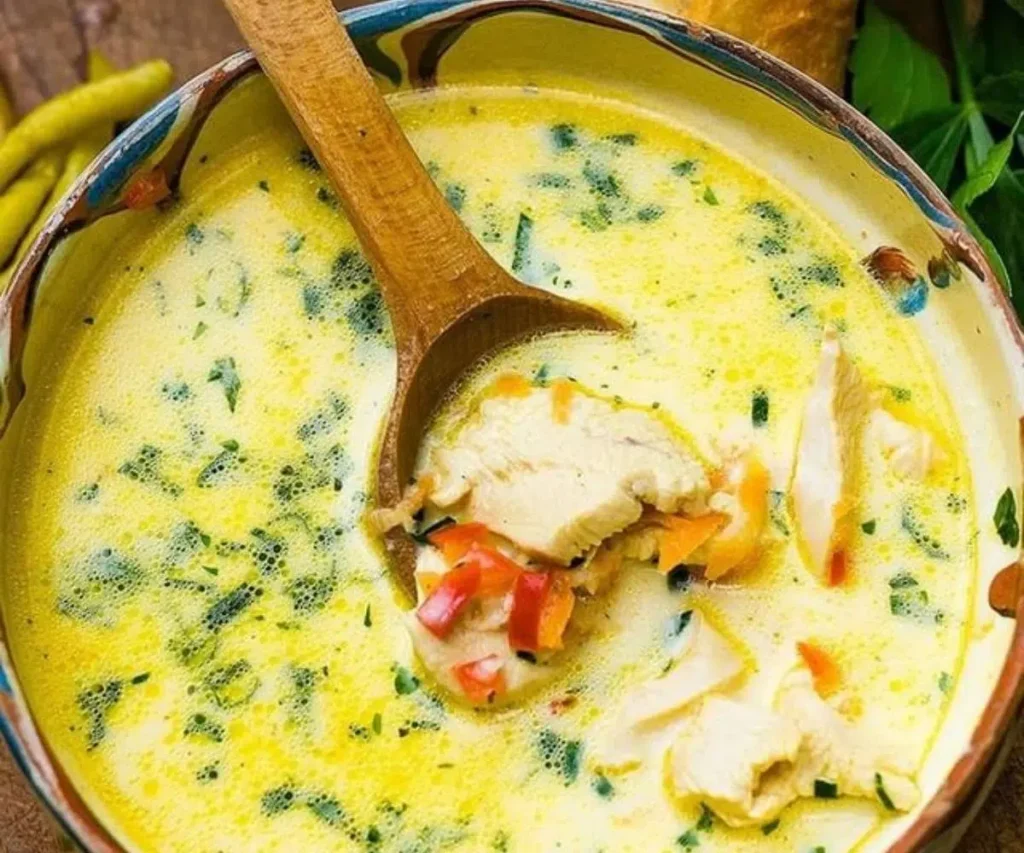
11) Ciorbă rădăuțeană (Chicken Soup)
Ciorbă rădăuțeană is a tasty Romanian chicken soup known for its sour taste. It’s made with chicken, vegetables, and a blend of sour cream and garlic.
Start by boiling chicken with salt. Add vegetables like onions, carrots, celery, and bell pepper. Simmer everything until tender.
Remove the chicken and vegetables from the pot. Shred the chicken into pieces. Strain the broth and return it to the pot.
Cut the vegetables into small pieces. Add them and the shredded chicken back into the pot.
To make the soup sour, mix sour cream with egg yolk, crushed garlic, and lemon juice. Stir this mixture into the soup.
Let the soup simmer for a few more minutes. Serve it hot, garnished with fresh parsley.
Enjoy the comforting and flavorful Ciorbă rădăuțeană!
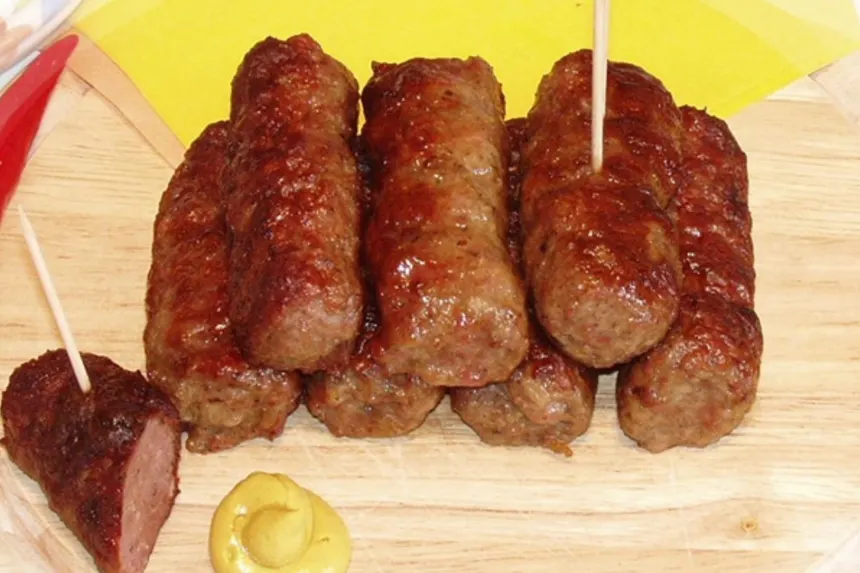
12) Mititei (Romanian Mititei)
Mititei, also known as “mici,” is a popular Romanian street food. These grilled sausages are made from a mix of beef, pork, and sometimes lamb.
You’ll need ground meat, garlic, thyme, paprika, salt, and black pepper. Mix these ingredients until they are well combined. Slowly add beef stock to the mixture while kneading. A stand mixer can make this easier.
Form the meat into small rolls, about 2-3 inches long and 1 inch thick. Wet your hands to prevent sticking. Refrigerate the rolls overnight to let the flavors blend.
When ready to cook, grill the Mititei on medium heat. Turn them often to ensure they are evenly cooked and have a nice, charred exterior.
Serve Mititei with mustard and fresh bread. These sausages are juicy and packed with flavors that represent Romanian cuisine. Enjoy them at a BBQ or a casual meal with friends and family.
History of Romanian Cuisine
Romanian cuisine has evolved through a mix of cultural influences and regional variations, reflecting its diverse history and geographic location. From Greek and Turkish to Hungarian and Slavic, many cultures have left their mark on Romanian dishes.
Cultural Influences
Romanian cuisine features a blend of flavors brought by various cultures that have influenced the region over centuries. The Ottomans introduced kebabs and meats like lamb, and you can see their influence in dishes like sarmale (cabbage rolls) and mici (grilled sausages). Greek cuisine contributed foods like ciorbă (a type of sour soup), while Slavic influences are found in stews and polentas.
Italians brought pasta dishes, and the Austro-Hungarian Empire introduced pastries and sweets. This mix has created a rich culinary tapestry where you can find everything from hearty stews to delicate pastries.
Regional Variations
Different regions in Romania have their own special dishes and traditions. In Transylvania, you might find rich, smoky flavors in foods like varza a la Cluj (cabbage and pork stew). Moldavia is known for its thick stews like tochitură, often served with mămăligă (cornmeal mush).
In the southern regions, like Wallachia, you will find lighter dishes featuring vegetables and fruits. For example, salată de vinete, a type of eggplant spread, is very popular. Each region’s food reflects its history, local agricultural products, and external influences, making Romanian cuisine varied and rich in tradition.
Key Ingredients in Romanian Recipes
Romanian recipes often feature a blend of distinct herbs and spices and are rooted in staple foods that reflect the country’s agricultural heritage. Here’s a closer look at these crucial components.
Common Herbs and Spices
- Paprika: A key spice in Romanian cooking, paprika adds color and mild heat to dishes. It’s often used in stews and soups.
- Dill: This herb is popular for its fresh and slightly tangy flavor, commonly used in soups, salads, and pickles.
- Garlic: Essential in many Romanian recipes, garlic adds a pungent kick to meats, soups, and salads.
- Bay Leaves: Frequently used in soups and stews like ciorbă, bay leaves add a subtle depth to dishes.
- Parsley: Chopped parsley is often sprinkled over dishes as a garnish, offering a fresh, bright flavor.
- Thyme: Used liberally in stews and meats, thyme provides a woody and earthy note.
Staple Foods
- Cabbage: Cabbage is vital in Romanian cuisine, especially in dishes like cabbage rolls (sarmale) and sour cabbage stew (varza calita).
- Polenta (Mămăligă): Made from cornmeal, polenta is a traditional side dish often served with cheese or stews.
- Pork: A main meat in many Romanian dishes, pork is used in sausages, stews, and roasts.
- Potatoes: Frequently used in soups, stews, and side dishes, potatoes are a versatile staple.
- Beans: Dried beans are commonly used in soups and stews, providing a hearty and nutritious component.
- Cheese: Varieties like telemea and caș are often used in salads, pastries, and main dishes.
